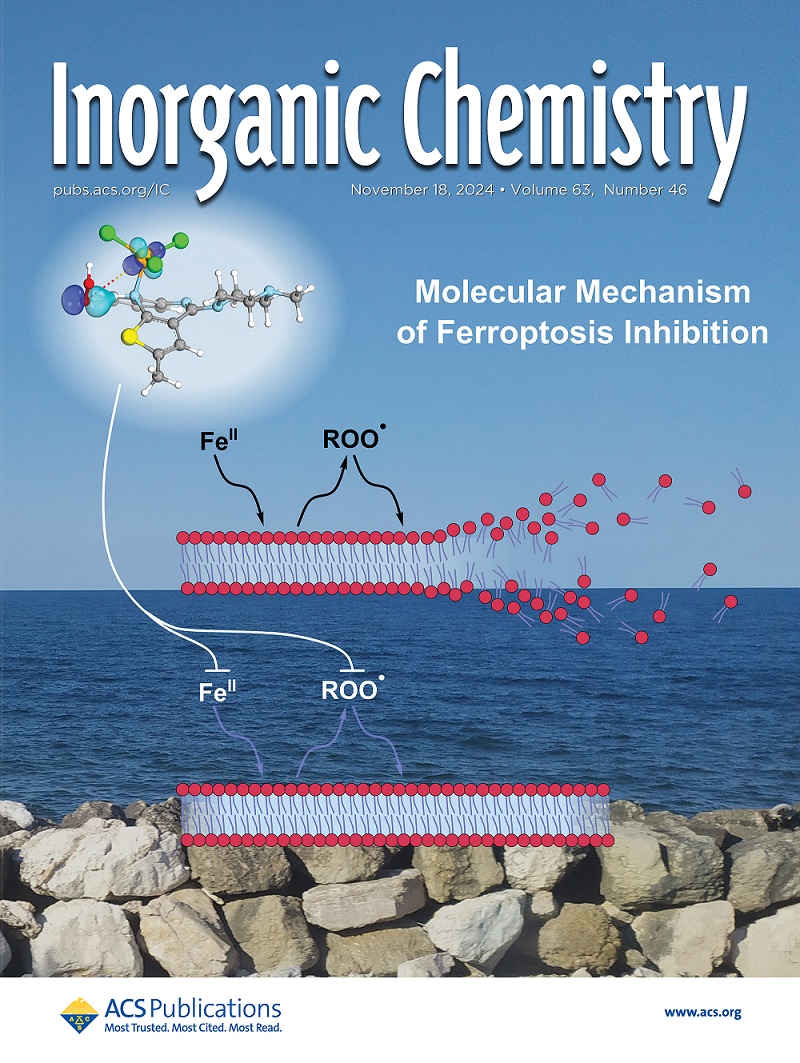Determination of Electrochemical Kinetic Parameters of Irreversible Redox Couples That Do Not Obey Conventional Butler-Volmer and Marcus-Hush Kinetic Models.
IF 4.3
2区 化学
Q1 CHEMISTRY, INORGANIC & NUCLEAR
引用次数: 0
Abstract
Cyclic voltammetry is routinely applied for the kinetic analysis of irreversible redox couples in two distinct manners: (i) by utilizing digital simulations that adhere to either the conventional Butler-Volmer (cB-V) or conventional Marcus-Hush (cM-H) kinetic models or (ii) by employing characteristic analytical equations. Recent studies demonstrated that these traditional models are inadequate for the kinetic parametrization of redox couples exhibiting significant peak potential differences and adhere to a modified B-V (mB-V) model, wherein the condition of α + β = 1 is relaxed. Consequently, a simulation program has been developed using Python, and the existing equations have been revised to accommodate the mB-V model and are verified employing digital simulations. The accurate kinetic parameters obtained using the modified method for the Fe3+/Fe2+ couple are α = 0.38 ± 0.00, β = 0.38 ± 0.00, Ef0 = 0.47 ± 0.00 V, and k0 = (4.9 ± 0.2) × 10-5 cm/s. For the [UO2(CO3)3]4-/[UO2(CO3)3]5- couple, the parameters are α = 0.27 ± 0.00, β = 0.26 ± 0.00, Ef0 = -0.70 ± 0.00 V, and k0 = (3.2 ± 0.4) × 10-6 cm/s. It is strongly recommended to determine whether α + β = 1 or α + β ≠ 1 and subsequently apply the corresponding analytical equations to achieve accurate kinetic parametrization of irreversible couples.不符合常规Butler-Volmer和Marcus-Hush动力学模型的不可逆氧化还原对电化学动力学参数的确定。
循环伏安法通常以两种不同的方式用于不可逆氧化还原对的动力学分析:(i)利用传统的Butler-Volmer (cB-V)或传统的Marcus-Hush (cM-H)动力学模型的数字模拟,或(ii)采用特征分析方程。最近的研究表明,这些传统模型不适用于具有显著峰电位差异的氧化还原对的动力学参数化,并遵循改进的B-V (mB-V)模型,其中放宽了α + β = 1的条件。因此,使用Python开发了一个仿真程序,并对现有方程进行了修订,以适应mB-V模型,并使用数字仿真进行了验证。修正方法得到Fe3+/Fe2+对的精确动力学参数为α = 0.38±0.00,β = 0.38±0.00,Ef0 = 0.47±0.00 V, k0 =(4.9±0.2)× 10-5 cm/s。对于[UO2(CO3)3]4-/[UO2(CO3)3]5-偶联,参数为α = 0.27±0.00,β = 0.26±0.00,Ef0 = -0.70±0.00 V, k0 =(3.2±0.4)× 10-6 cm/s。强烈建议确定α + β = 1或α + β≠1,然后应用相应的解析方程来实现不可逆耦合的精确动力学参数化。
本文章由计算机程序翻译,如有差异,请以英文原文为准。
求助全文
约1分钟内获得全文
求助全文
来源期刊

Inorganic Chemistry
化学-无机化学与核化学
CiteScore
7.60
自引率
13.00%
发文量
1960
审稿时长
1.9 months
期刊介绍:
Inorganic Chemistry publishes fundamental studies in all phases of inorganic chemistry. Coverage includes experimental and theoretical reports on quantitative studies of structure and thermodynamics, kinetics, mechanisms of inorganic reactions, bioinorganic chemistry, and relevant aspects of organometallic chemistry, solid-state phenomena, and chemical bonding theory. Emphasis is placed on the synthesis, structure, thermodynamics, reactivity, spectroscopy, and bonding properties of significant new and known compounds.
 求助内容:
求助内容: 应助结果提醒方式:
应助结果提醒方式:


